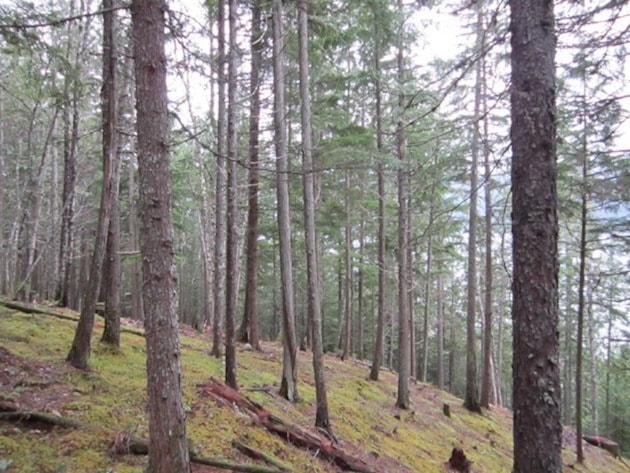The Slocan Integral Forestry Co-operative, the community forest based in the Slocan Valley, has released its wildfire protection plan.
“To effectively protect rural areas in BC we need a landscape-level approach rather than a piecemeal one in order to really make a difference,” says manager Stephan Martineau. “Strategically located fuel managed zones are required so we can create large defendable fuel breaks. For the past few years we have been working on a plan to identify these zones and a methodology that can be replicated in other areas. As far as we are aware, we are the first tenure holder in the province to create such a plan.”
“With increasing climate change, we expect more fires in most of BC,” says forestry supervisor Tom Bradley. “We also expect the tree species mix in local, low-elevation forests to change. Given these and other changes, it is important to be proactive. We need open forests made up of fire-resistant conifers and deciduous trees, with low fuel loads in the strategic fuel managed zones. The quickest way to get there is to keep the suitable big trees already on the site.”
To move forward with this approach, the forestry co-op completed a tenure-wide fire behaviour-modelling project in 2015. The project goal was to identify the main fire travel paths in the Slocan Valley, considering topography, fuel types, and prevailing wind directions. This modelling highlighted areas where fuel management would create a fire-break and enhance suppression opportunities, while significantly reducing the likelihood of a fire like the one experienced in Fort McMurray this spring.
“If you know ahead of time where fires will most likely travel and you place your fuel managed zones in those likely paths, you are using a pre-emptive approach, significantly increasing your chances of keeping communities safe, and preventing the size and intensity of a wildfire that is very challenging to contain,” Martineau explains.
“We are not talking standard harvesting,” adds Bradley. “We want lots of large trees in the fuel managed zones, and we want those trees to have good odds of surviving a fire. We get there by reducing fuel loads, so the next fire is low intensity. This helps protect the forest ecosystem, and is a perfect fit with climate change adaptation. Low fire intensity also means better suppression chances, which helps protect communities.”
The Slocan Integral Forestry Co-operative has been working successfully to protect municipalities in the Slocan Valley for the past six years.
“We have been instrumental in bringing in over $2 million to help protect the municipalities,” Martineau says. “They are now some of the best protected in BC, but unless we add in a landscape-level approach, our investments are at risks with possible out-of-control large fires. Looking at the big picture is crucial at this juncture if we want to take the next proactive step toward protecting rural BC.
“We took on a community forest within the watersheds we drink from because we believe no one would care as much or do a better job of management than those of us who live and work here. It is now clear that climate change adaptation and fire hazard management are central keys to achieving our ecosystem-based management goals.”
Government support is important to implement this multifaceted approach, Martineau said.
“By including a commercial component to our strategy we reduce our dependence on funding, but funding is still a key component. What we need is a pilot project in the Interior of BC that would demonstrate how all the pieces can come together to make us safe and to start the high priority adaptation to climate change that we really need to do. We are ready to go."
